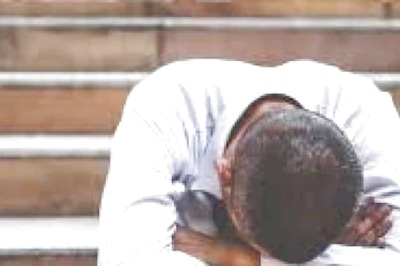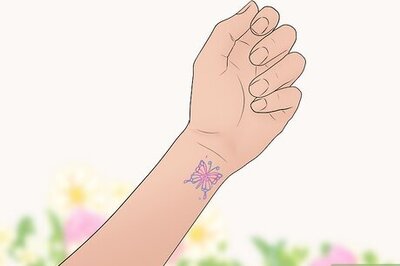
views
New Delhi: Chaos reigns outside the burns casualty building of Safdarjung Hospital. Policemen, visitors, reporters, camerapersons are all jostling for space. No one is allowed in without a thorough security check. Bouncers are also on alert, ready to throw out anyone who has no business being there.
It’s colder than usual this Thursday night but no one has registered the winter chill. All anyone can think about is a 23-year-old patient in the burns ICU, rushed in here earlier in the day with 95% deep burns. She doesn’t have a face now, all her skin has melted, her body has shrunk and turned almost black, and she is now breathing through a tube inserted in her throat.
She was alone when two men raped her this time last year in Uttar Pradesh’s Unnao. She was alone on her way to a court hearing on Thursday morning when five men, two of them her alleged rapists, beat her up, doused her in kerosene and set her on fire. She ran alone for a kilometre, burning, until she could find a phone to call for help.
But as she lies here fighting for life, a media circus surrounds her family, politicians dust off sound bites, there’s political blame-game, of course, and the police back home are eager to appear active.
An enraged nation, whose week began with the loss of another woman in Hyderabad, is hanging onto her every laboured breath, hoping against hope that’s it’s not her last.
The burns unit at Sardarjung Hospital is the biggest in the national capital and the largest the world-over in terms of patient flow. The doctors have known since the moment she was brought in that with 95% burns and inhalation injuries, there is very little hope.
Four people have no choice but to hope. The girl’s mother, sister and brother are at the hospital, while her father is in Unnao. Their hope hinged on knowing that their girl is a fighter. Even while duelling death, she had managed to give a statement to the magistrate at a civil hospital in Lucknow before being airlifted to Delhi.
Their fighter makes it through the night.
It's past noon the next day. She's on ventilator support, her vitals unstable. Her younger sister Harsha (name changed) is trying to peek inside the burns ICU through the frosted glass window and is crying continuously. She can't see her sister though. The burns ICU is partitioned into 12 cubicles that are occupied at all times.
In contrast with Harsha’s hectic attempts to see her sister, is her numb mother’s vacant gaze at a wall, concealing the storm of emotions raging inside.
Harsha tries to talk to me, but I can’t understand anything she is saying. Her wails are drowning her words. Difficult as it is for her to stay put outside the burns ICU, I don’t want her to step out and into the sea of reporters and camerapersons waiting to hear from the family. What can our mics and pens hope to capture that we do not already know? What can we possibly ask them at this dark hour?
The girl’s brother wants to talk and goes to get the necessary permissions. I step out and head downstairs to join the rest of the media waiting for him. The moment he arrives, we descend on him with our mics, cameras, audio recorders and notepads. He is overwhelmed.
I remove the gamchha from around his neck and cover his face. I do so to protect his sister’s identity which must remain concealed in accordance with the law. But he doesn’t ask me why, he just lets me cover his face.
“The whole country is praying for your sister. How is she,” I ask.
“She is recovering,” he says. And then adds, “I am thankful to the government for the good treatment.”
Why would he say that? Isn’t he angry? Has he been told or tutored to say that he is satisfied with the system’s response? I wonder, but I don’t probe further. Now is not the time.
Before leaving the hospital, I request doctors to give me a call if the dreaded comes to pass. I would have to inform the newsroom and be ready to report live. That’s the job, isn’t it?
I get the chilling message around Friday midnight. After fighting for 40 hours, the girl had succumbed to her injuries.
“Despite our best efforts, she did not survive. Her condition deteriorated towards the evening. She had a cardiac arrest around 11:10 pm. We tried to resuscitate her, but she passed away around 11:40 pm,” says Dr Shalab Kumar, head of the Burn and Plastic Surgery Department at the hospital.
I am back at the hospital at 6am. The family’s wait outside the burns ICU has ended with the mortuary where their daughter is now referred to as ‘the body’.
Harsha is still crying, her brother is holding their mother, who is still numb. UP and Delhi Police continue to man the entry and exits, their perimeter now widened to include the mortuary.
Reminiscent of his eerily calm composure the previous night, the girl’s brother thanks the hospital administration and the media for support.
And then, as he gets ready to take his sister home one last time, he says something that will forever be seared into India’s conscience. “We will bury her. There is nothing left to burn now.”
The family leaves as the ambulance siren screeches in their wake, piercing through a nation’s stunned silence.




















Comments
0 comment